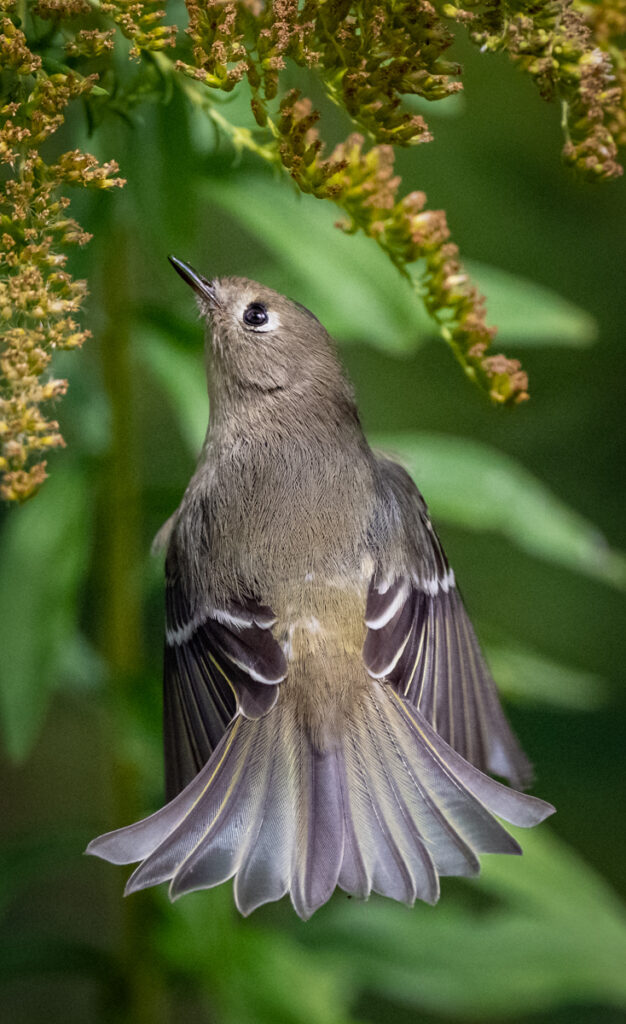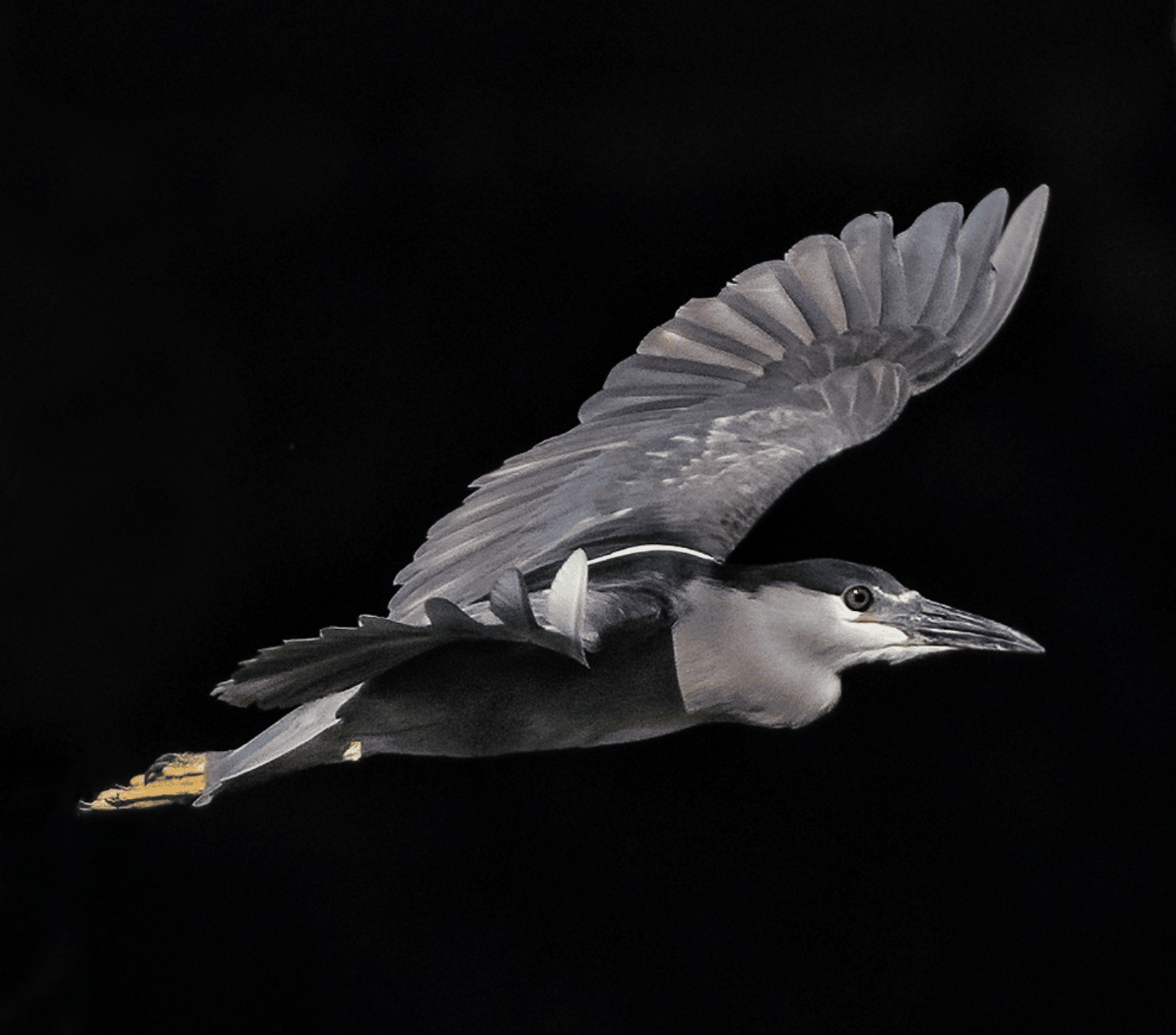
I am delighted to announce the addition of a new gallery featuring the best of my recent photos. I will refresh the gallery regularly. I’ve had fun putting this gallery together, but it was a real challenge. When I’m traveling to photograph birds, I get lost in a magical world that only a person like you who is passionate about birds could understand. The time literally flies by and I can’t stop shooting. Usually, I begin as the sun rises and am on my feet until the end of my day, which may be long after the sun sets. I don’t feel any pain, only pleasure until I fall exhausted into my car and drive back to my hotel. You can imagine, that when I return home, I have thousands, sometimes tens of thousands of images. Choosing my favorites is one of the biggest challenges I face as a bird photographer.
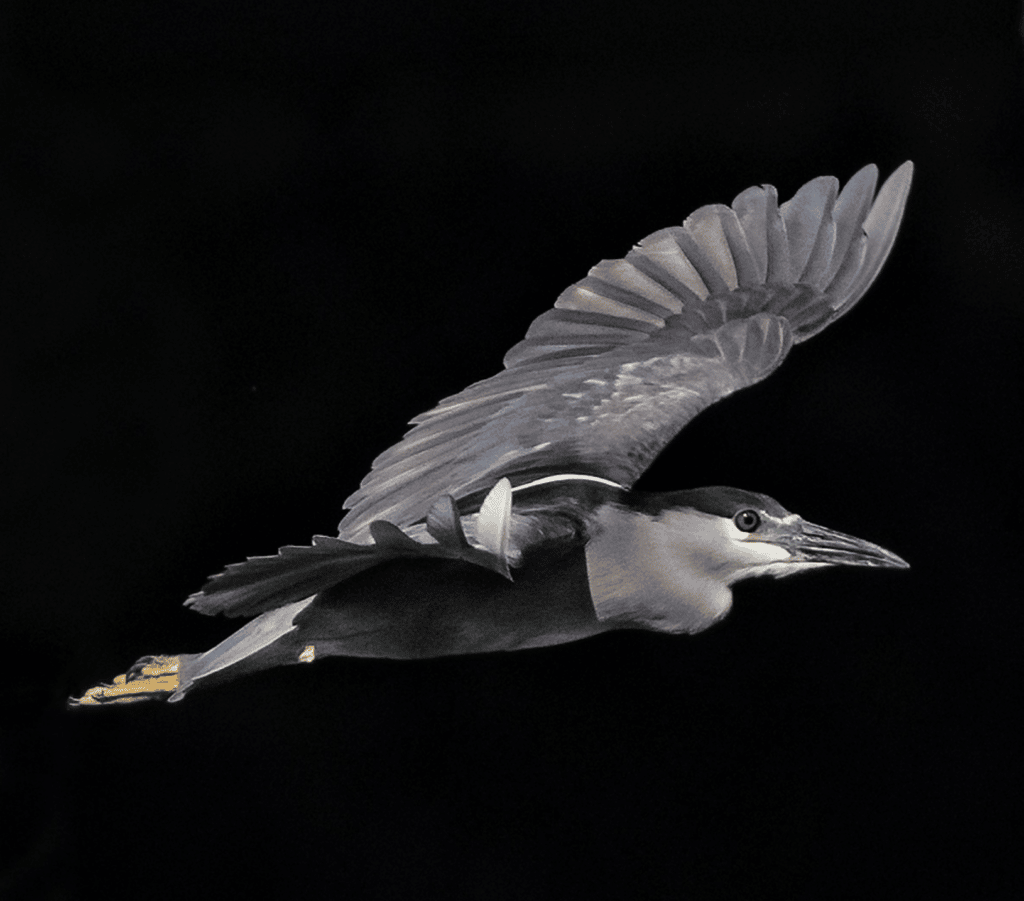
I recently took a trip to the volcanic islands of Hawaii, home to over 350 species of extraordinarily colorful and striking birds, which makes it one of the top destinations in the world for birders. Its relatively “new” geology and diverse range of flora and fauna is a treasure trove of natural beauty and information for scientists and conservationists. But sadly, Hawaii was recently dubbed the “extinction capital of the world” with at least 32 known bird species becoming extinct in the last 250 years, countless more are endangered. The mechanisms behind this are now well known, such as invasive species, avian flu, pollution, and climate change. Understanding the causes is a huge part of figuring out what to do next to try to ensure more species don’t fall to the same fate.
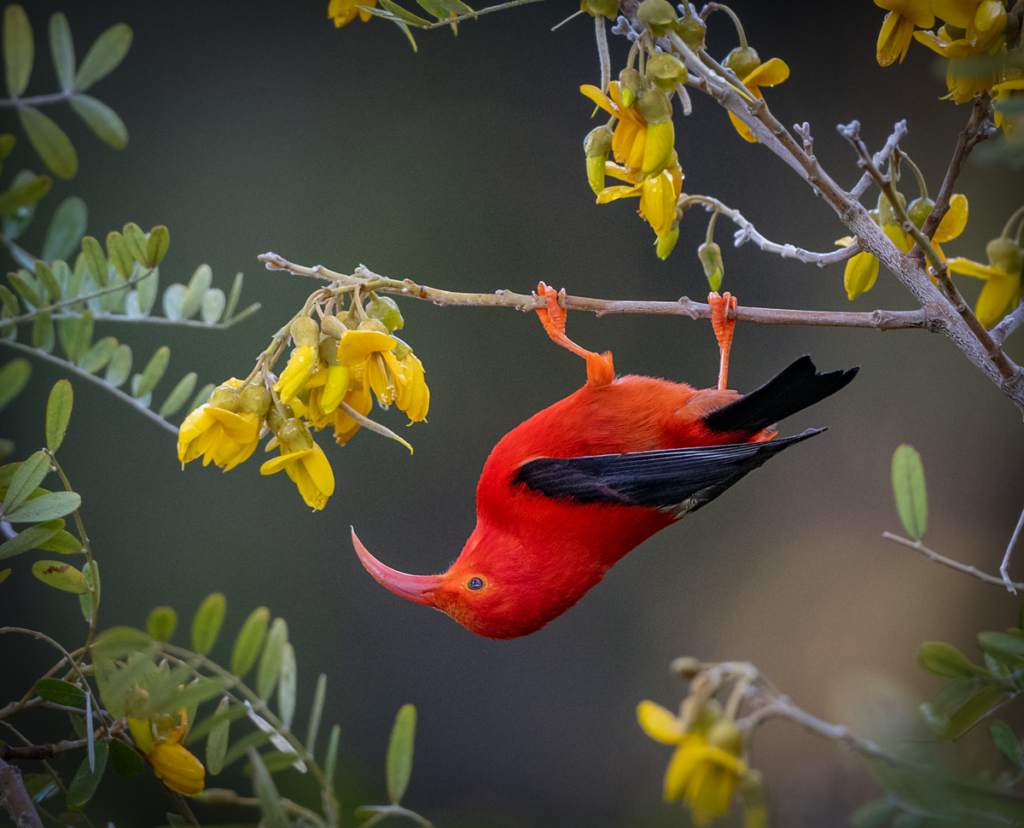
I’iwi
One of Hawaii’s most iconic birds is the vibrant fiery-red and orange I’iwi, also known as the scarlet honeycreeper. This beautiful bird is the third most common native in Hawaii and has a song described as whistles, balls being dropped into water, squeaky rusting hinges, and the noise made when rubbing party balloons together. While still considered relatively common, I’iwi have lost over 90% of their range in the ‘Ōhi’a forests as a disease takes hold of these majestic trees and the remaining population is increasingly under threat from avian malaria carried by the mosquito inhabitants of the islands, now able to ascend to higher altitudes due to climate change. The dazzling plumage and distinctive sickle-shaped bill seen here make this one of the most sought-after birds, and they are easiest to see on Kaua’i, Maui, and the Big Island; this one was taken on Kaua’i.
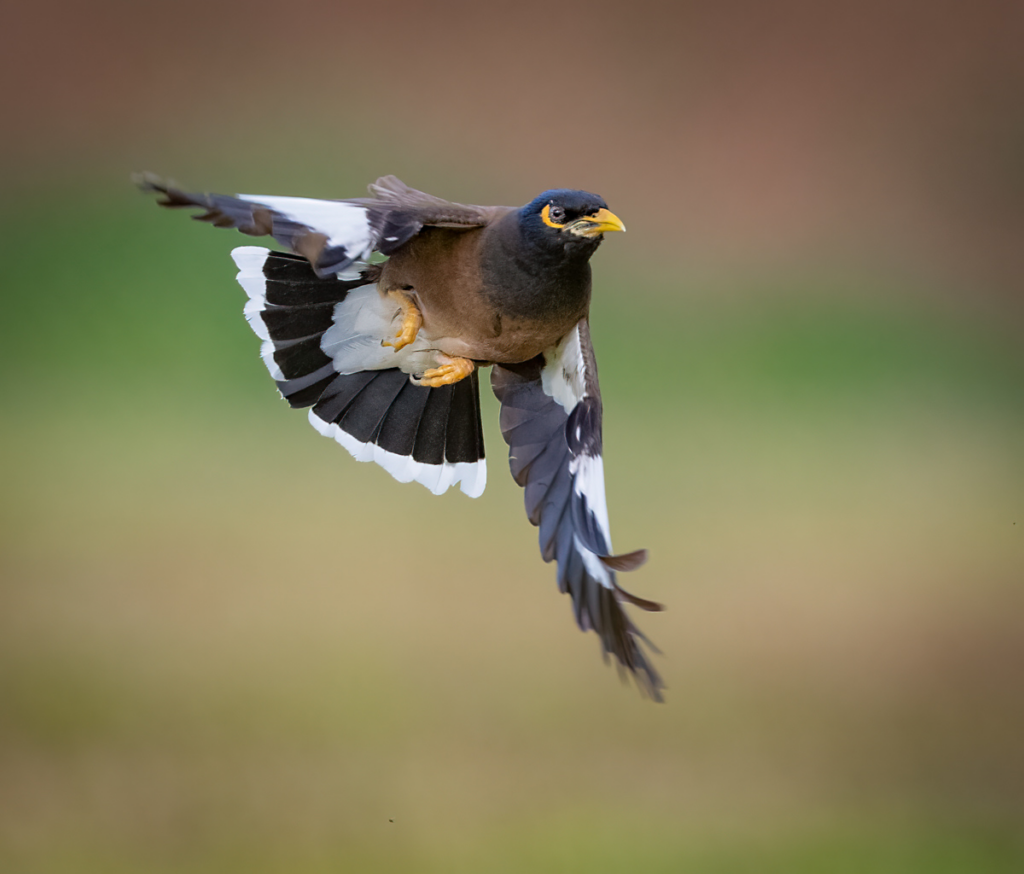
Common Myna
Often referred to as the most easily recognized bird in Hawaii, the common myna is not actually a native and was introduced to the islands in 1865 as a form of pest control against cutworms and armyworms. Establishing itself very successfully, it is now the most widespread species on the islands. Regarded as having a jaunty demeanor, it is often spotted strutting through the parks and gardens of urban and suburban areas, roosting communally. As this non-native species has been cut off from its source population for over 150 years, geneticists and evolutionary biologists keenly study this bird to observe microevolutionary processes at work. That flash of yellow you can see there around and behind the eye matching the bill and legs is actually bare skin. This specimen was photographed on Maui.
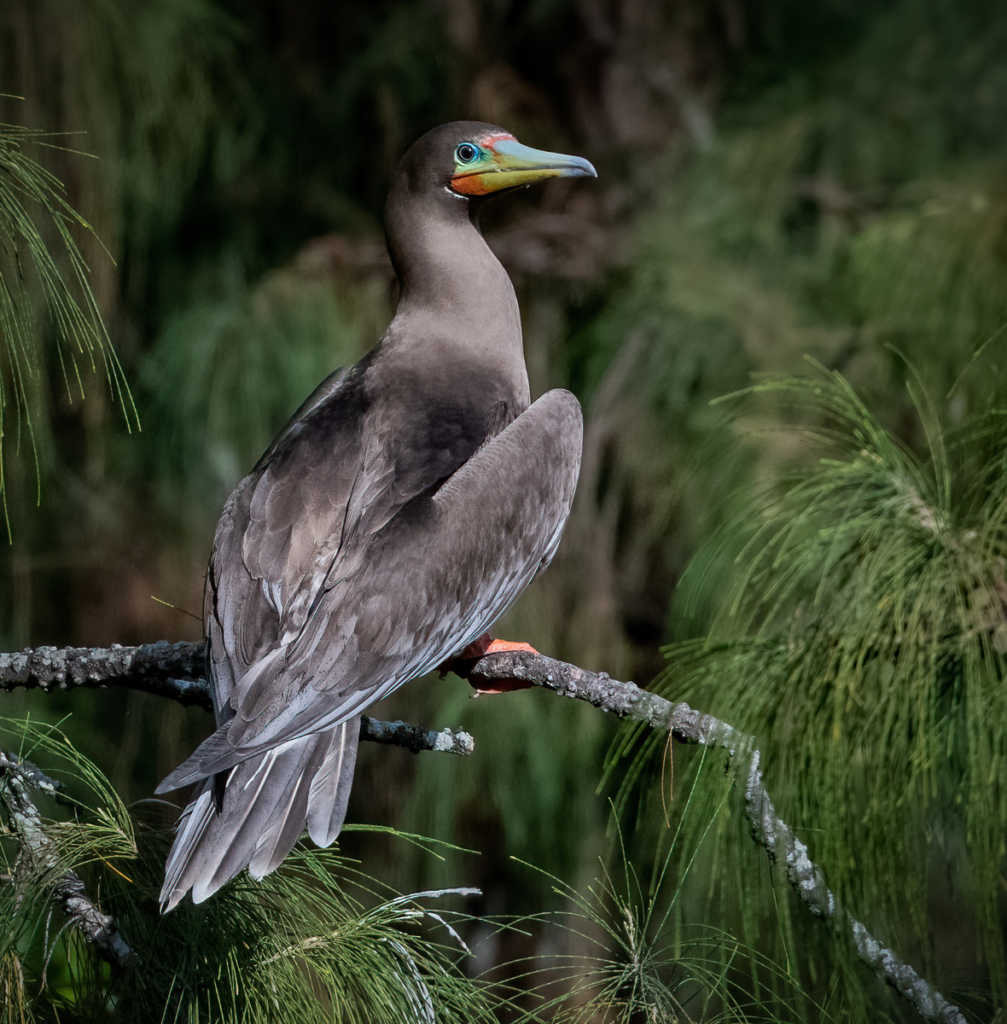
Red-footed Booby
The bright red feet of this seabird lend it its name, also making it easier to spot than its less common cousins, the masked booby and brown booby. This photograph shows a bird with brown morph plumage, but that pale blue bill is the best identifying factor here. The red feet are their most striking against brilliant white plumage, and become most brightly hued during breeding season. Red-footed boobies are easily located along all coastal areas of the island range, breeding year-round in the southeastern islands, and during spring and summer in the northwestern areas. The largest colony can be found roosting among the shrubs and trees of the rocky terrain near to the lighthouse on Kauai at Kilauea Point National Wildlife Refuge. Numbers are considered to be stable or increasing as many of the birds reside in officially protected areas.
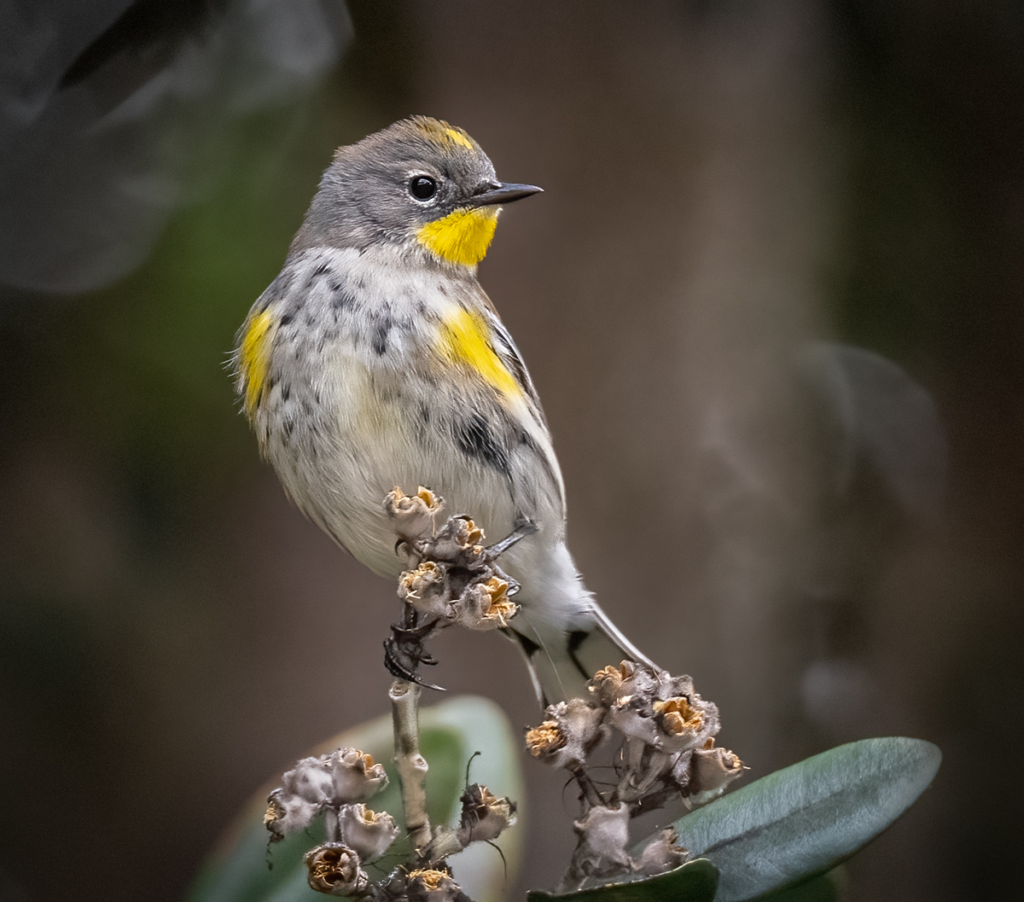
Yellow-rumped Warbler
This medium-sized warbler has a vast distribution across much of the United States, concentrating in the northern regions during breeding season until migrating south to southern North and Central America during the winter. As it flies away, it flashes its trademark yellow rump, earning itself the affectionate term “butter-butt”. This photo was taken in California at Monterey Bay, a very popular coastal birding site owing to the sheer diversity the environment offers in terms of flora and fauna. There is usually a birding festival held there every year, the Monterey Bay Birding Festival, although this has been on hiatus since the coronavirus pandemic. While the gallery will largely be made up of photos from my recent travels to find the world’s most beautiful birds, you don’t have to travel far from home to find beautiful birds. I shot this Ruby Crown Kinglet in the garden of my home in the Indiana Dunes.
